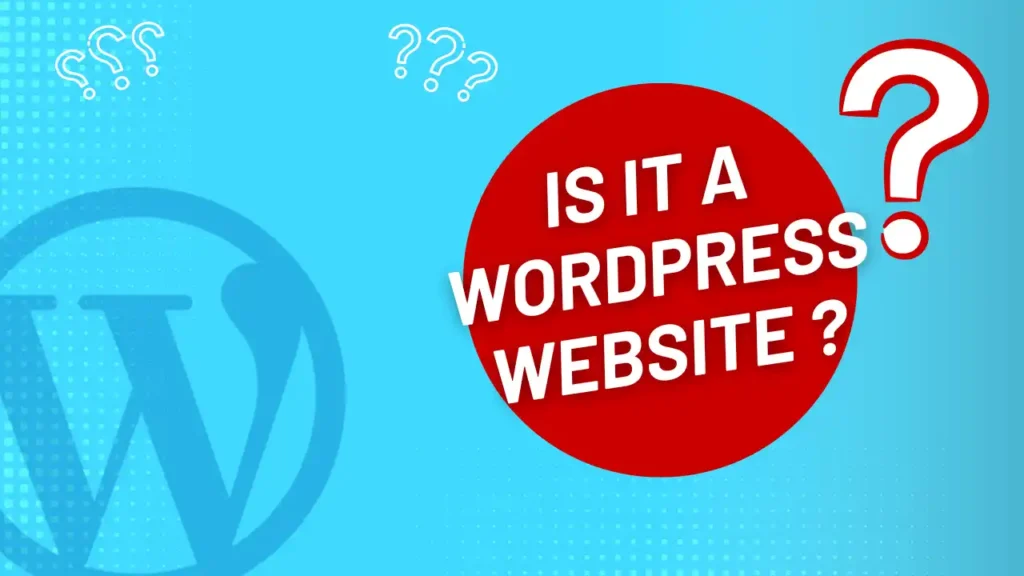Have you ever stumbled upon a website and wondered if it was built using WordPress, one of the most popular content management systems (CMS) in the world? WordPress powers more than 40% of the websites on the internet, making it a go-to choice for bloggers, businesses, and developers alike.
Identifying whether a site uses WordPress can be helpful for many reasons. Perhaps you’re a web developer seeking inspiration, a business owner evaluating competitors, or simply curious about a website’s technical foundation.
In this article, we’ll explore step-by-step methods to identify WordPress websites. From obvious clues to advanced techniques, we’ll cover everything you need to know.
1. Understanding WordPress: Why It’s Popular
Before diving into the methods, let’s briefly understand why WordPress is such a dominant force in the web development world.
Why Choose WordPress?
WordPress offers unparalleled flexibility, making it ideal for creating anything from simple blogs to complex e-commerce platforms. With its vast library of themes and plugins, users can customize their websites without writing a single line of code.
Its open-source nature means developers worldwide contribute to its growth, ensuring it stays updated and secure. WordPress also supports SEO optimization out of the box, a significant advantage in today’s competitive digital landscape.
Popular WordPress Websites
Did you know that major websites like TechCrunch, TED blog, and even Sony Music use WordPress? This highlights its ability to cater to diverse needs, from media companies to governmental organizations.
2. Signs That a Website Might Be Built on WordPress
2.1. Common Indicators on the Front-End
Sometimes, WordPress websites reveal themselves with simple visual or structural clues. For example:
- Default WordPress Themes: If a website uses themes like Twenty Twenty-Three or Twenty Twenty-One, it’s almost certainly WordPress-powered.
- Footer Credits: Look for text like “Proudly powered by WordPress” at the bottom of the page.
- Widgets and Sidebars: Common elements like Recent Posts or Categories widgets are telltale signs.
2.2. Checking the Browser’s Page Source
Inspecting the page source is a reliable way to confirm if a site uses WordPress. Here’s how:
- Right-click on the webpage and select View Page Source.
- Look for wp-content or wp-includes in the source code. These directories are unique to WordPress.
- Search for meta tags like <meta name=”generator” content=”WordPress”>.
By spotting these identifiers, you can quickly confirm if a site runs on WordPress.
3. Tools to Identify WordPress Websites
3.1. Free Online Tools
For a hands-off approach, several online tools can detect WordPress sites. Examples include:
- BuiltWith: Provides detailed insights into a site’s technology stack.
- WhatCMS: Specifically designed to identify content management systems.
- IsItWP: A dedicated WordPress detection tool that’s fast and user-friendly.
To use these tools, simply enter the site URL, and they’ll do the rest.
3.2. Browser Extensions
Browser extensions like Wappalyzer or WordPress Theme Detector offer real-time identification of WordPress sites. Install the extension, visit the website, and check the CMS details displayed by the extension.
4. Advanced Methods to Confirm a WordPress Site
4.1. Using Pingbacks and Trackbacks
WordPress supports pingbacks and trackbacks, which are unique features for link notifications. To test this:
- Publish a blog post with a link to the suspected WordPress site.
- If you receive a pingback notification, it confirms the site is using WordPress.
4.2. Testing Admin URLs
Most WordPress websites use the default admin login URL: example.com/wp-admin. If accessing this URL redirects you to a login page, the site is likely built on WordPress.
4.3. Plugin or Theme Detection
Themes and plugins can also reveal a WordPress site. For example:
- Visit example.com/wp-content/themes/.
- Check style.css files for theme details.
While this method is more technical, it’s a definitive way to confirm WordPress usage.
5. Challenges in Identifying WordPress Sites
Not all WordPress websites are easy to spot. Some use custom themes or employ plugins to hide their WordPress identity.
Customization and Security Measures
Many developers customize WordPress to the extent that it becomes unrecognizable. Additionally, security plugins can obscure standard WordPress URLs and meta tags, making detection harder.
Overcoming These Challenges
Even with these obstacles, using advanced tools and methods like examining server headers or hiring a developer can help uncover a site’s CMS.
6. Ethical Considerations When Investigating Websites
While it’s exciting to uncover a website’s CMS, it’s crucial to remain ethical. Avoid intrusive methods that could compromise the site’s security.
Respect the website owner’s privacy and use the information responsibly. Remember, your goal should always be to learn, not to exploit.
7. WordPress Websites: Easier to Spot Than You Think
WordPress websites are everywhere, and with the methods outlined in this article, you can easily spot them. From visible clues to advanced detection tools, identifying WordPress sites is now within your grasp.
Whether you’re exploring for inspiration or researching competitors, knowing how to identify WordPress websites is an invaluable skill.
FAQs :
Yes, WordPress is highly customizable. Developers can create unique designs that look nothing like the default templates.
Yes, tools like ScanWP can identify the plugins a WordPress site is using.
Blocking access to /wp-admin is common for security reasons, but you can still check other methods like page source inspection.
Yes, as long as you use ethical methods and do not compromise the site’s security or privacy.
You can use plugins like Hide My WP to obscure standard WordPress identifiers.
By following this guide, you’re now equipped to identify WordPress websites with confidence and precision!
